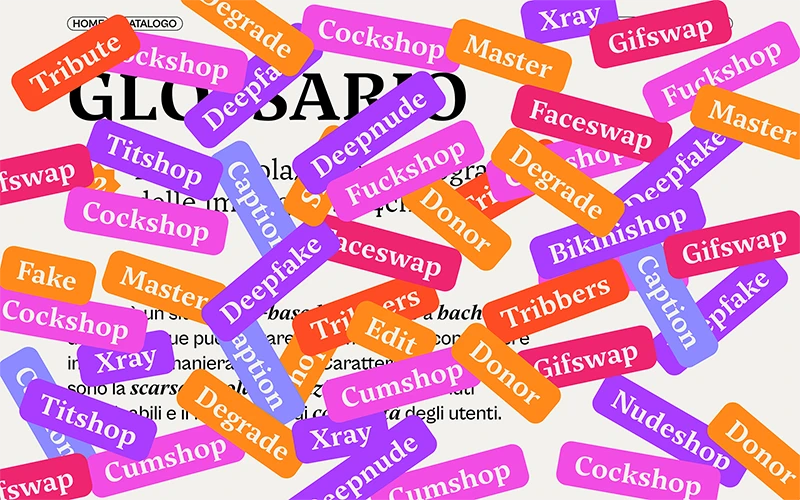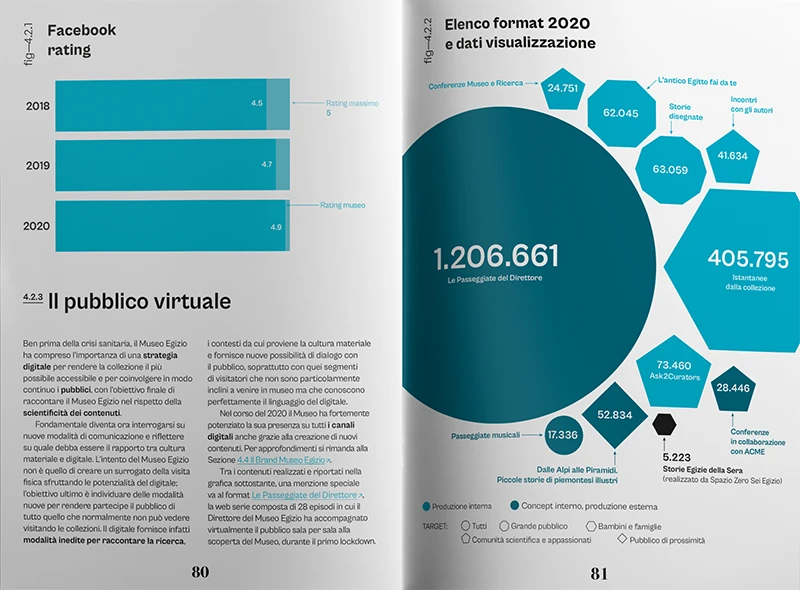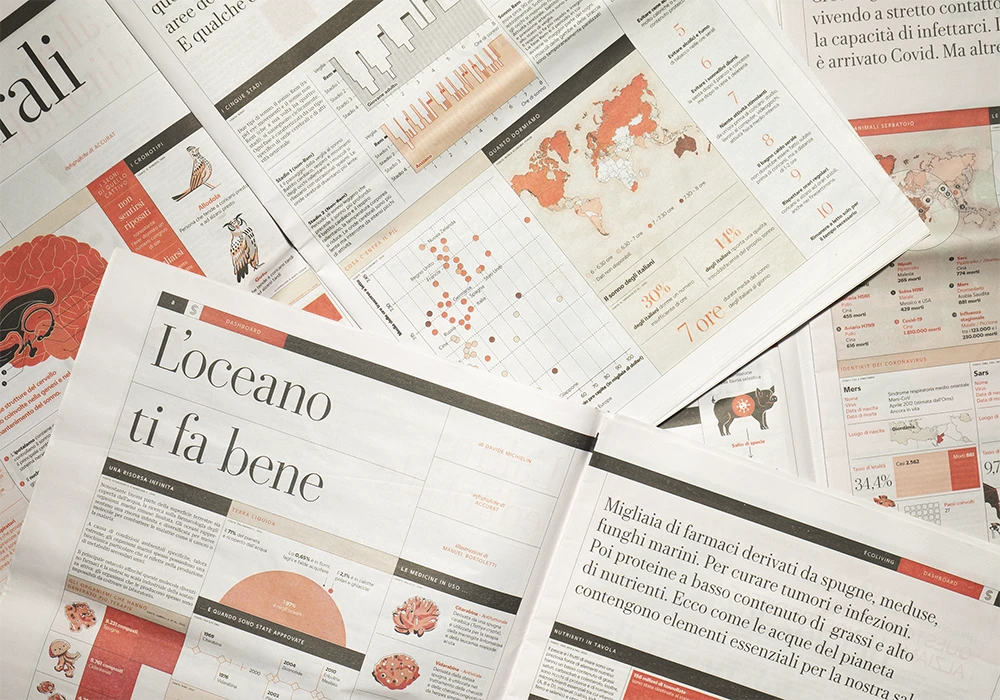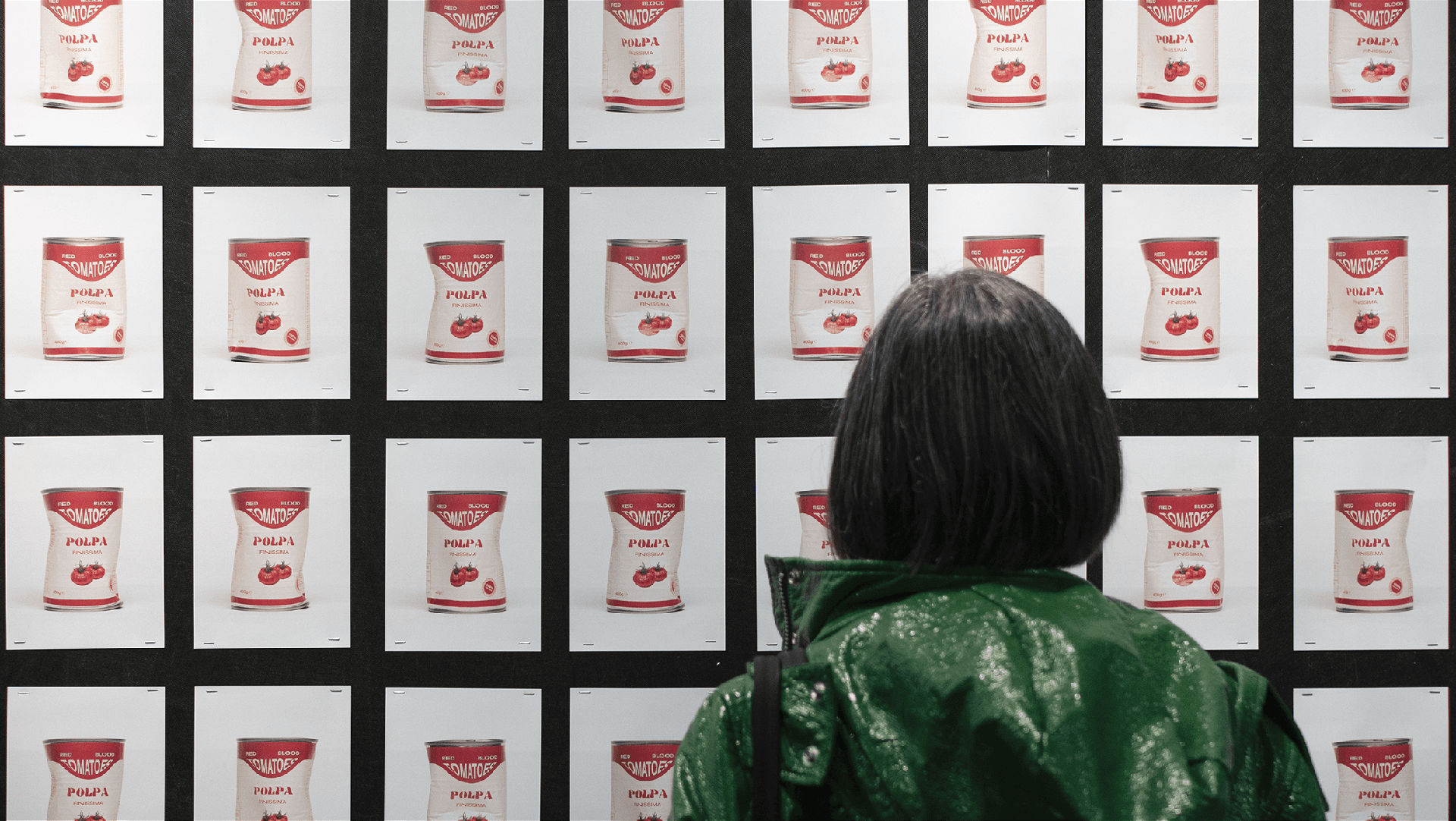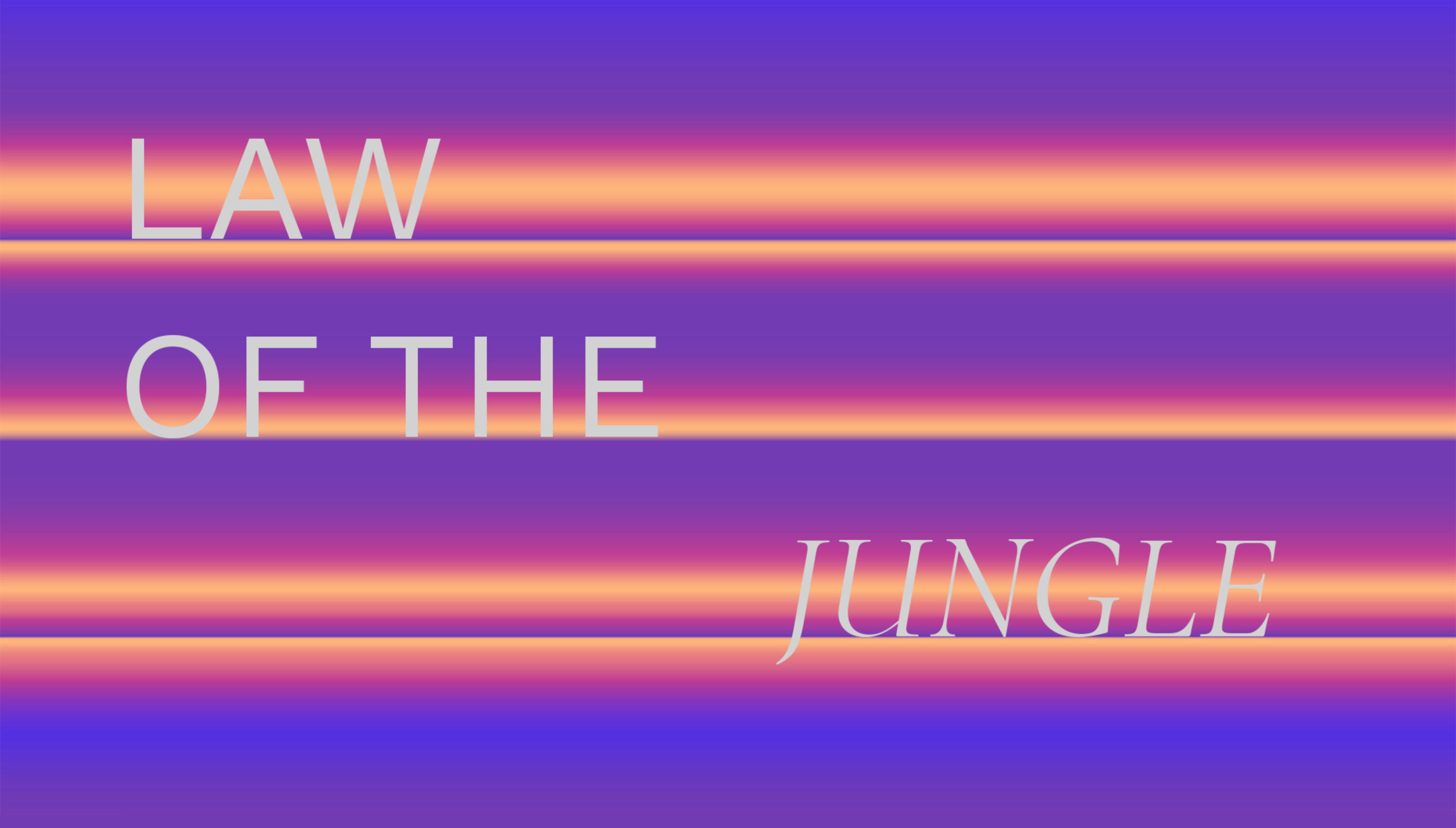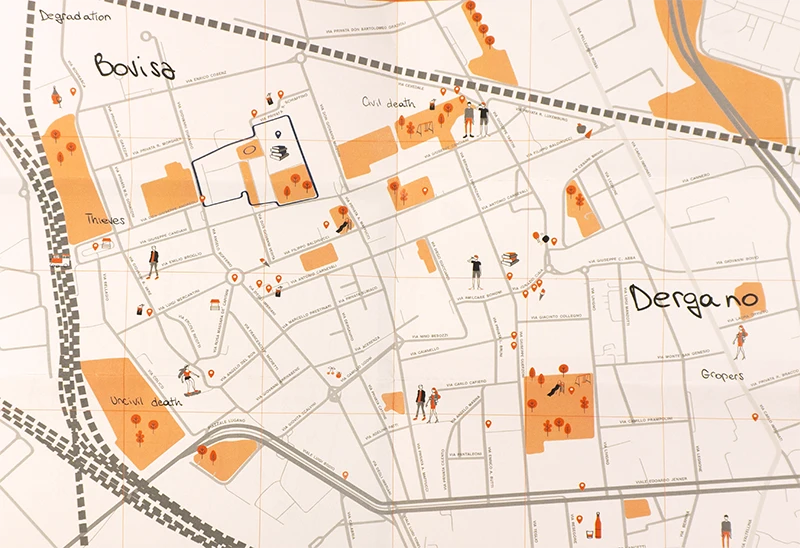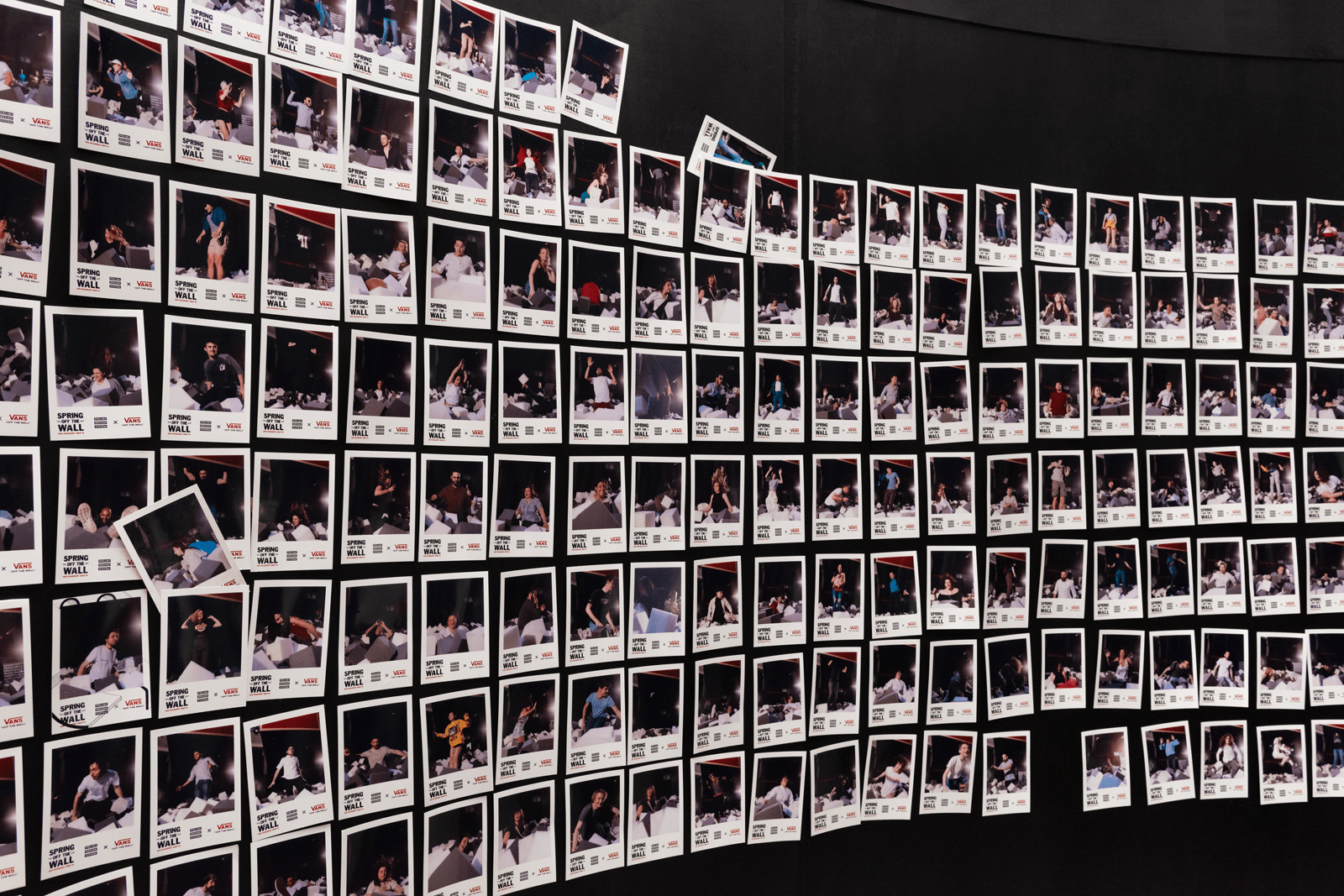70k lines of Telegram texts analyzed to create a catalogue of 313 postcards
3k lines of text on 4chan analyzed to create a glossary of 21 words
1 website with 6 pages designed
Project Language
Italian
My roleI handled the entire project from concept to completion independently.

Context
For my MSc final research project, I chose to address an urgent social issue enabled by digital technology, merging my interest in online spaces and behaviors with critical gender-related challenges. I focused on image-based sexual abuse, the non-consensual distribution and/or creation of private sexual material. This form of gendered violence occurs daily within vast online communities, primarily affecting unaware victims. When these acts make the news, the focus is often on the survivors, leading to victim-blaming similar to other forms of gender violence.
To define the context, I conducted an extensive literature review on image-based sexual abuse, sexual violence, gender violence, and gender and internet studies. I then examined media representation and victim-blaming dynamics, concluding that mainstream discussions, with their focus on survivors and sensationalizing language, perpetuate harmful stereotypes. There is an urgent need to shift the focus to the perpetrators to combat these damaging narratives.

While studying the practices of image-based sexual abuse and the role of platforms in facilitating them, I noticed that the language used in these communities was particularly distinct. This observation led me to focus my project on the online vernacular language—the unique expressions and styles of digital communities.
Goal
To propose a narrative of image-based sexual abuse that shifts the focus from the victims to the perpetrators, offering an alternative to the popular narrative.
Process
- Collected data on practices and vernacular of image-based sexual abuse on 4chan and Telegram, guided by five research questions.
- Analyzed and visualized data to highlight the main findings for each research question.
- Designed an artifact and crafted a narrative to effectively disseminate the research findings.
- Developed the website from wireframes to prototype, including custom data visualizations.
My research project was led by three fundamental research questions: How and on which digital platforms is image-based sexual abuse practiced? What are the practices and vernacular languages of image-based sexual abuse online? How can the vernacular languages of image-based sexual abuse found in the research phase be visualized?
I used digital methods to conduct my research, as they are suitable for the inquiry of online spaces and behaviors. I designed five research protocols, each guided by a research question, to analyze image-based sexual abuse practices on 4chan and Telegram and how online vernacular language facilitates them.
1. What types of requests are made on /r/ and which receive the most interaction?
Research protocol


2. What terms are used to define the most requested non-consensual creation of sexual images on /r/?
Research protocol

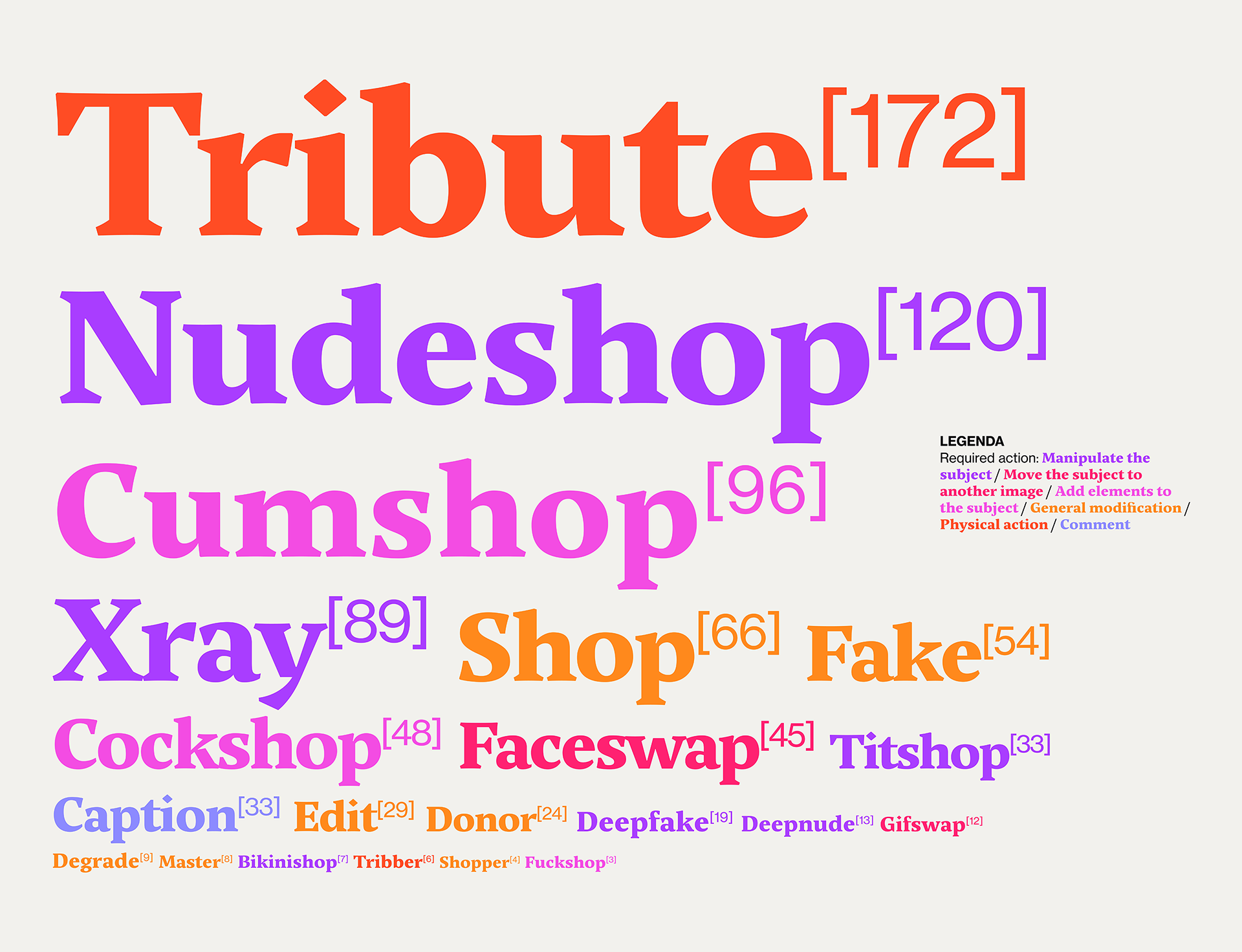
3. What terminology is associated with the keywords 'girls’, 'women’, and 'rape’ in the global search results on Telegram?
Research protocol

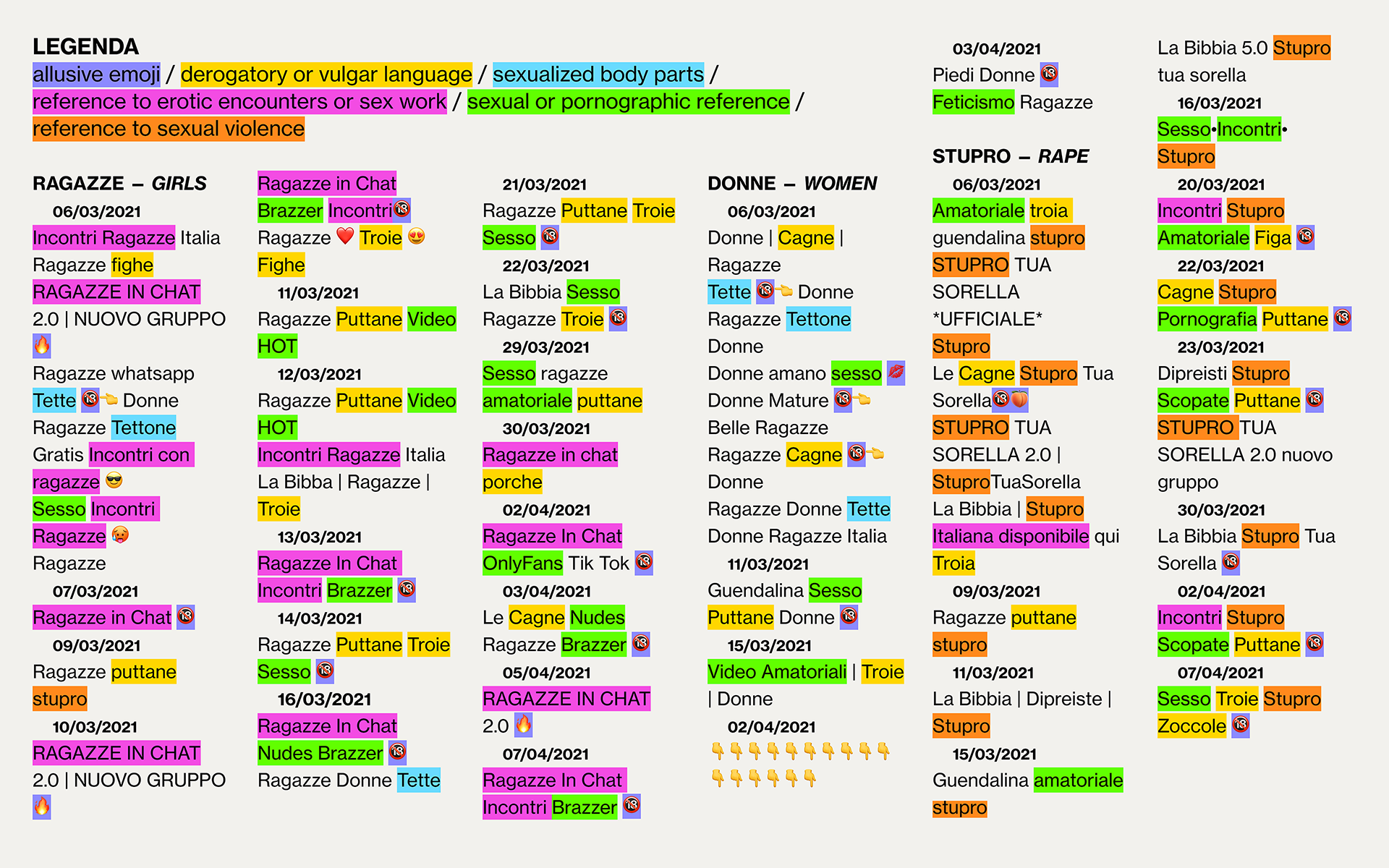
4. How is the Italian pornographic subculture structured on Telegram?
Research protocol

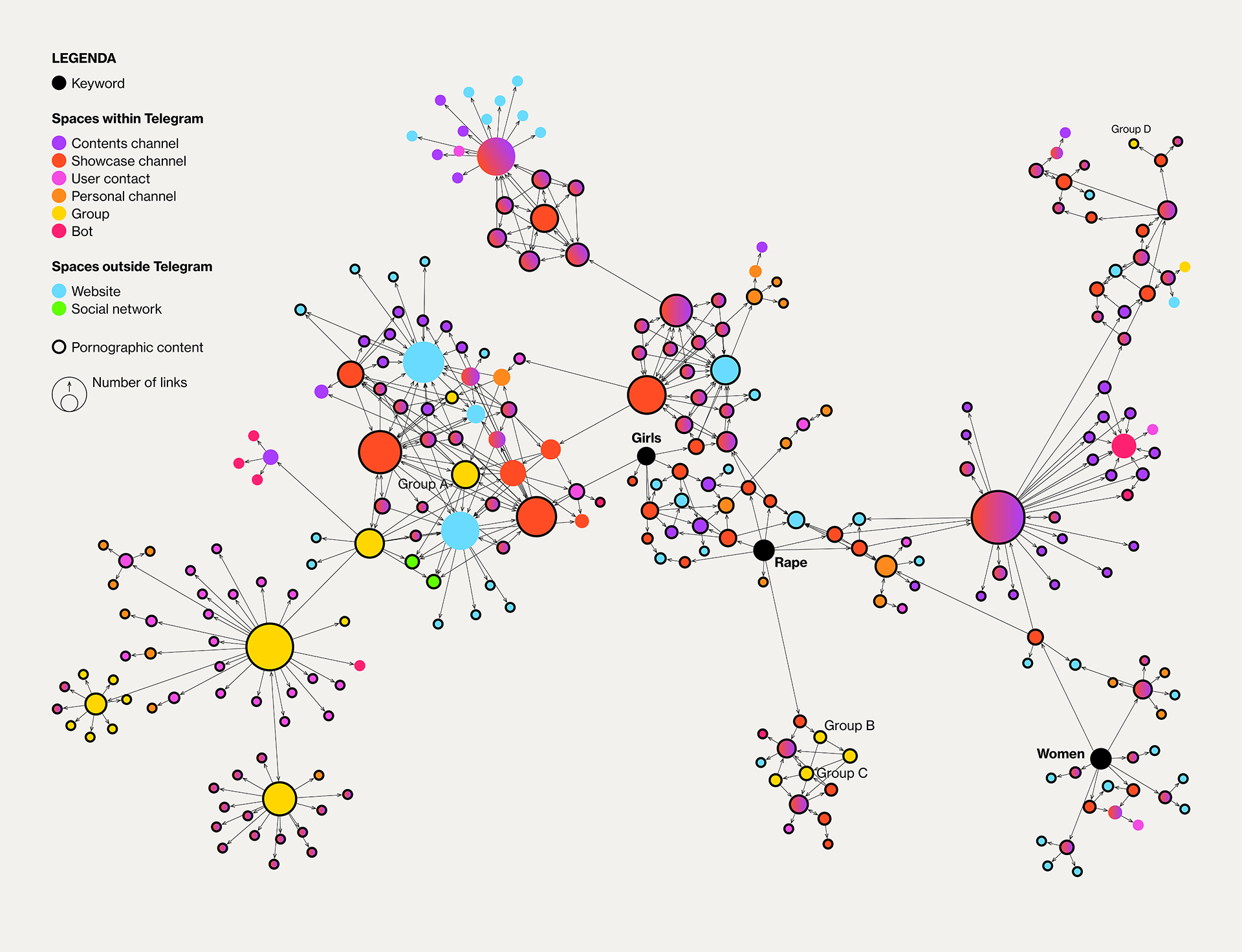
5. What image-based sexual abuse practices are discussed in Italian pornographic groups on Telegram, and how are they communicated?
Research protocol


↑ In this picture, only around 100 texts are displayed. The entire visualization is presented as a multi-page document.
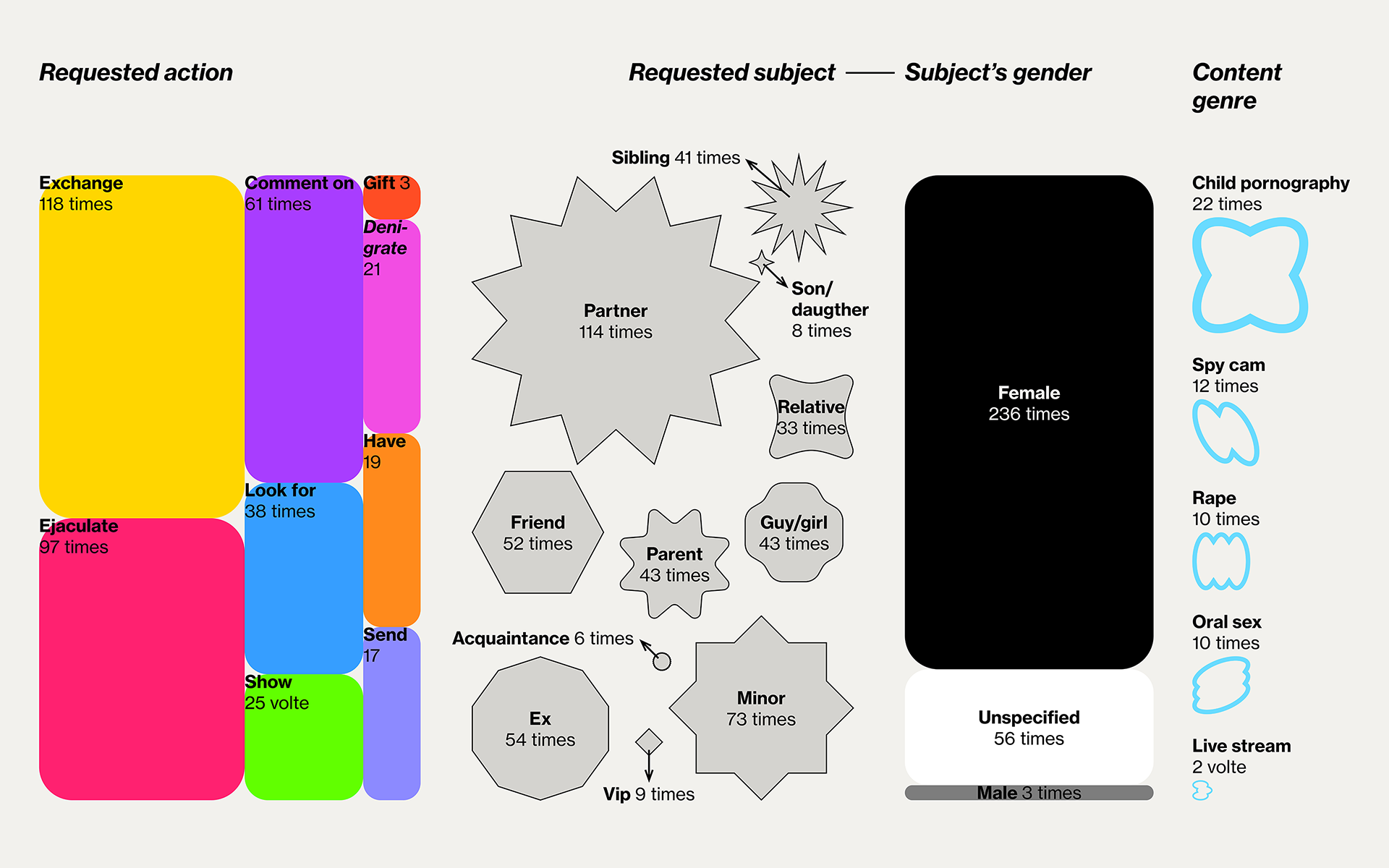
↑ This is the summary visualization I designed to present the research results at a glance.
Data and findings from research questions 2 and 5 served as the starting material to create the dissemination artifact, as they both involved an in-depth thematic analysis of conversations between perpetrators on both platforms. I decided to create a website due to the “onlineliness” of the subject itself, the versatility of the medium, and its potential to reach a wider audience.
I started designing the narrative and UX of the website to make it as clear as possible while providing the necessary amount of information on the topic and conveying its brutality and harmfulness. Meanwhile, my goal evolved.
User experience

Revised Goal
To visualize and translate the language of image-based sexual abuse online and its peculiarities according to different platforms. The goal is to not only propose an alternative narrative that shifts the focus from victims to perpetrators but also to highlight the variety of practices and the violence of image-based sexual abuse, counter victim-blaming dynamics, and raise awareness by informing about the phenomenon and denouncing its occurrence.
Outcome
The website “Non sono solo immagini” serves as a dissemination platform for the research I conducted, translating the distinct practices and language of image-based sexual abuse on 4chan and Telegram into digital artifacts.

The name itself conveys multiple meanings through the italicization of some words. “Non sono solo immagini,” translatable as "It’s not just images," emphasizes that image-based sexual abuse is also facilitated by words, highlighting its real and harmful nature.
Due to the sensitive nature of the content, the website begins with a trigger warning, alerting users to the presence of sexual violence and derogatory and violent language. The homepage features a brief introduction to image-based sexual abuse and its practices.
The first artifact is the catalogue, which displays 313 requests for images and/or videos constituting image-based sexual abuse made by members of four Telegram groups active in the Italian pornography subculture. These requests are visually rendered as postcards, displayed in a visualization where the filter buttons also serve as a legend. The background color represents the proposed action, such as material exchange or discussion. Each solid shape represents the subject requested, whether it's a partner, ex, or parent, with the shape's color denoting the subject's gender. If specified, the outlined shape symbolizes the content genre, such as rape or child pornography.
The second artifact is the glossary, which showcases the most frequently used terms by 4chan users when requesting the manipulation of material to make it sexually explicit. These manipulations are presented like a card index, with each manipulation detailed in a file containing its definition, variants, related terms, and examples. This index also functions as a word cloud, organizing terms based on their frequency of use. The color of each file represents the type of manipulation requested, such as altering the subject, relocating it in another image, or depicting a specific action within the image.
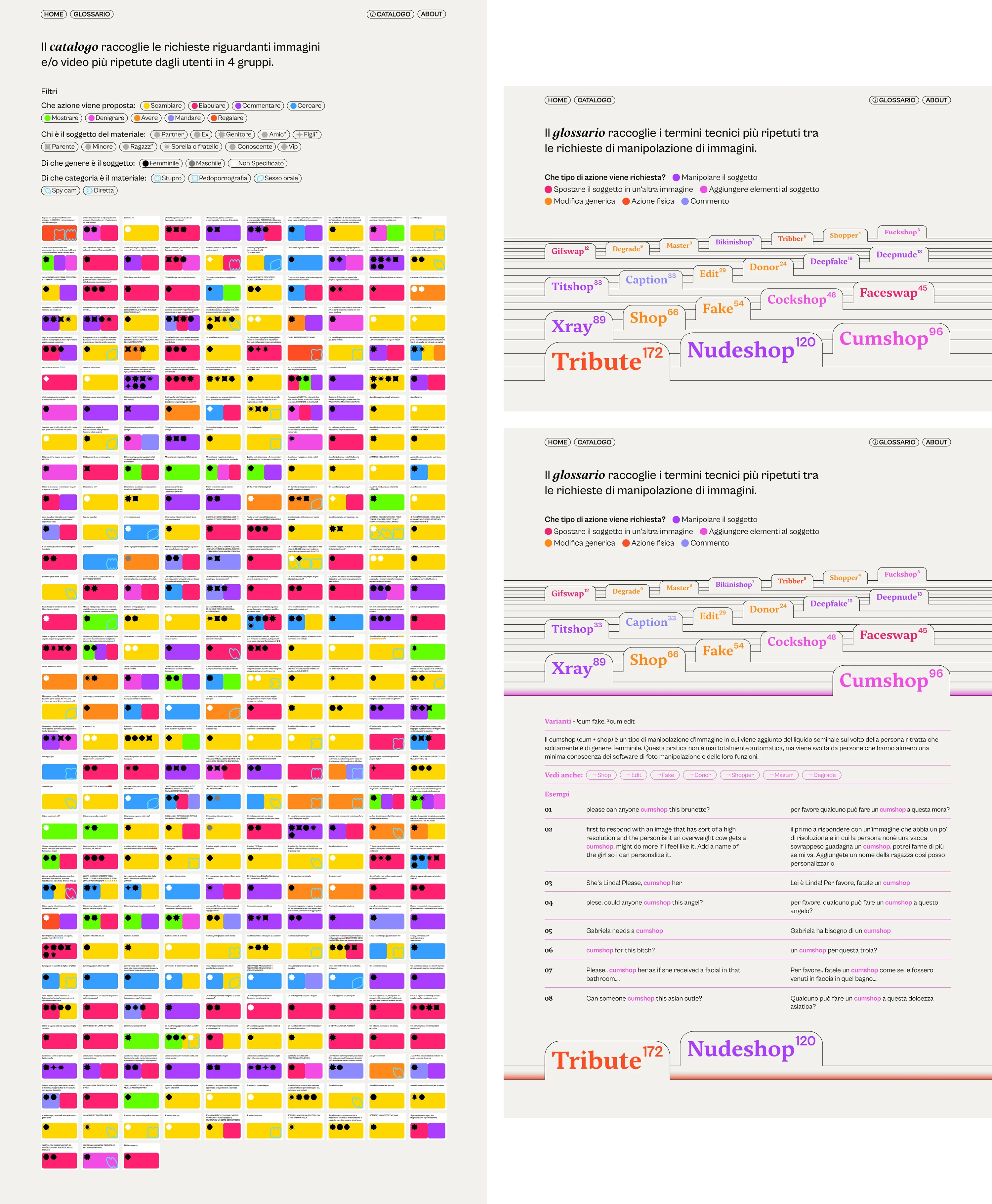
↑ A comprehensive view of both the catalog and the glossary.
The theoretical background of image-based sexual abuse, the research conducted on 4chan and Telegram using digital methods, and the concept and design of “Non sono solo immagini” are explained in detail in the thesis book.
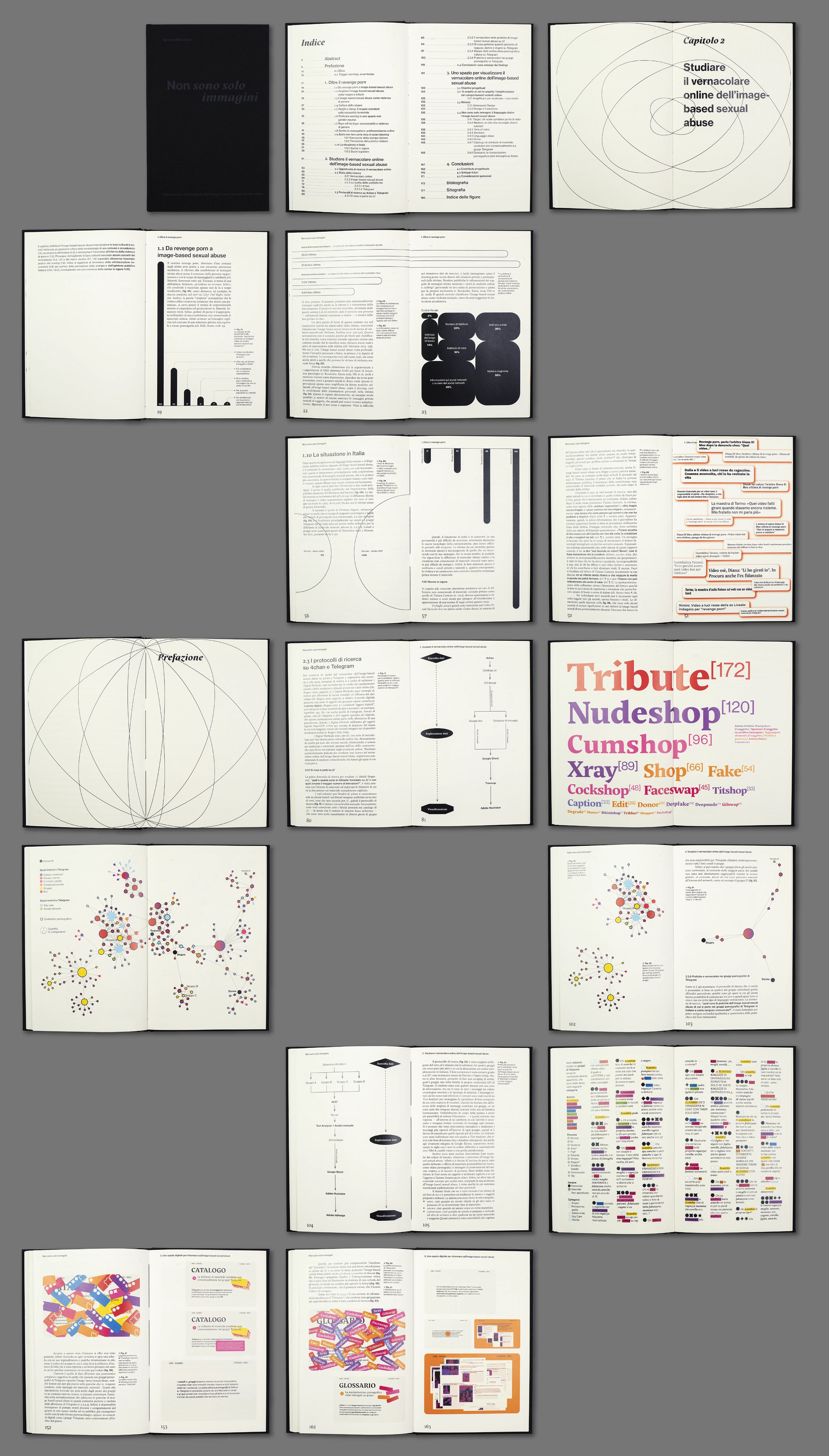
Result
I addressed image-based sexual abuse by shifting the focus from victims to perpetrators, exposing the violence and its gendered nature. Through "Non sono solo immagini," I raised awareness and fostered critical discussions. By combining communication design with social advocacy, I created an impactful, functional tool that received positive feedback and earned the highest score in my MSc dissertation.
Skills: Qualitative Research, Digital Methods, Data Analysis, Art Direction, Visual Design, Data Visualization Design, Information Design, UX/UI Design, Prototyping, Writing, Editorial Design
Advisor: Gabriele Colombo
